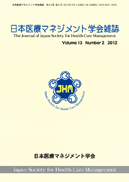Volume 12, Issue 4
Displaying 1-10 of 10 articles from this issue
- |<
- <
- 1
- >
- >|
Original Articles
-
Article type: Original Articles
2012 Volume 12 Issue 4 Pages 216-220
Published: March 01, 2012
Released on J-STAGE: June 26, 2020
Download PDF (952K)
Case Reports
-
Article type: Case Reports
2012 Volume 12 Issue 4 Pages 221-224
Published: March 01, 2012
Released on J-STAGE: June 26, 2020
Download PDF (769K) -
Article type: Case Reports
2012 Volume 12 Issue 4 Pages 225-228
Published: March 01, 2012
Released on J-STAGE: June 26, 2020
Download PDF (950K) -
Article type: Case Reports
2012 Volume 12 Issue 4 Pages 229-235
Published: March 01, 2012
Released on J-STAGE: June 26, 2020
Download PDF (1152K) -
Article type: Case Reports
2012 Volume 12 Issue 4 Pages 236-239
Published: March 01, 2012
Released on J-STAGE: June 26, 2020
Download PDF (490K) -
Article type: Case Reports
2012 Volume 12 Issue 4 Pages 240-244
Published: March 01, 2012
Released on J-STAGE: June 26, 2020
Download PDF (852K) -
Article type: Case Reports
2012 Volume 12 Issue 4 Pages 245-249
Published: March 01, 2012
Released on J-STAGE: June 26, 2020
Download PDF (594K) -
Article type: Case Reports
2012 Volume 12 Issue 4 Pages 250-254
Published: March 01, 2012
Released on J-STAGE: June 26, 2020
Download PDF (858K) -
Article type: Case Reports
2012 Volume 12 Issue 4 Pages 255-260
Published: March 01, 2012
Released on J-STAGE: June 26, 2020
Download PDF (1116K)
Introductory Reports
-
Article type: Introductory Reports
2012 Volume 12 Issue 4 Pages 261-264
Published: March 01, 2012
Released on J-STAGE: June 26, 2020
Download PDF (1032K)
- |<
- <
- 1
- >
- >|
